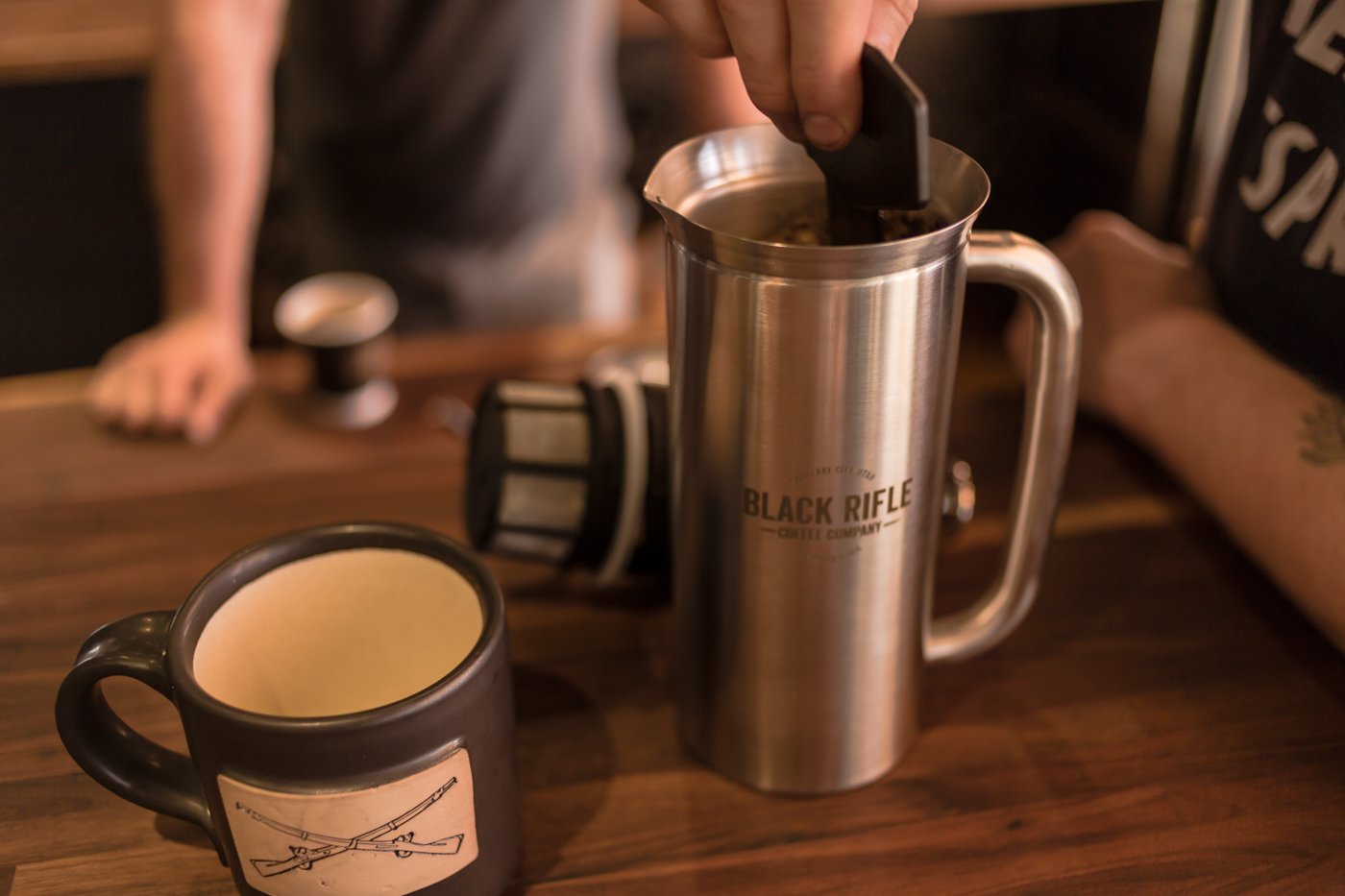3 Easy Methods for Manually Brewing a Great Cup of Coffee

With the ease of Keurig and Verissimo, it’s easy to forget that manual brewing is a viable option for your morning cup (or two) of coffee. And while pour-overs and French pressed coffee are all the rage at expensive artisanal coffee shops these days, the craft of manually brewing a cup of coffee at home can seem even further out of reach. But it doesn’t have to be.
While manual brewing may seem clunky and time consuming, your reward is a quality cup of coffee that costs considerably less than $4 to make — and, we promise, it’s really not that hard. In fact, these three means of manually brewing coffee are downright easy.
Cold Brew
Cold brew is the least stressful way to make coffee. If you haven’t tried it by now, you’ve likely at least seen it at a local cafe. Native to Japan, this method has been renowned as a go-to for a no-fuss, great cup of coffee since the 1600s, and for good reason. Basically, all you need is coarsely ground coffee, water, and six to 12 hours to kill — and those hours are completely hands off, so feel free to set it up before going to bed.
There are various methods of making cold brew, but you basically immerse coffee grounds in a pitcher of water at a 2:1 ratio (twice the amount of water as coffee grounds). Let it sit for six to 12 hours, then drain and discard the grounds. Your cold brew is ready! But be careful — the brew is concentrated, so basically treat it like espresso. If you want a traditional-strength coffee experience, add about two parts water or milk to one part cold brew.
Cold brew is the perfect method for enjoying iced coffee, but you can also pop it in the microwave if you’re craving a hot cup of joe in the morning.
Cone Drip / Pour Over
For those of us familiar with pour-over, it may seem easier to pay $4 a cup rather than buying a Chemex and a goose-necked kettle, but good pour-over doesn’t require anything as fancy or expensive as that. In fact, portable filters like the v60 can be mounted right on your mug and make a fantastic cup of coffee all the same.
Most people know the base procedure for making a fantastic pour-over — add a couple of scoops of grounds to a filter and then pour hot water over it. But there are a few tricks you can use to maximize the flavor of your cup.
For one, you’ll want a medium to fine grind on the beans to ensure that the water is extracting as much flavor as possible. The motion in which you pour the water is also important. While a pour-over kettle isn’t absolutely necessary for this, you do need to make sure to pour the water in a circular motion over the grounds to get the most out of them. While the ratio of water to grounds will vary by roast and strength preference, general guidelines suggest 16 parts water to 1 part grounds.
Pour-over devices generally use a paper filter, which, unlike a mesh filter, “absorbs some of the oils that will be extracted from the coffee during brewing,” said Matt Leviner, Black Rifle Coffee Company’s Coffee Category Manager. “This lends to a cleaner and generally brighter cup with lighter mouthfeel/body.”
French Press
A French press is a great investment for coffee drinkers who are committed to an evenly extracted, robust cup of coffee without having to stand over a cone for 4 minutes. There are many benefits to a French press, and the process is fairly easy and straightforward. All it requires is a couple of tablespoons of medium- to coarsely ground coffee, hot water, and a press.
Once you place the coffee grounds into the pitcher portion of the device, just add hot water — again, the ratios here will depend on your preference. After four minutes, press the plunger down to drain the grounds, and pour your coffee into a separate mug. For added complexity, feel free to salt your grounds.
The main difference in the coffee produced by a French press as opposed to a pour over is in the type of filter used. While the pour over uses a paper filter, French presses utilize a wire mesh filter. Since the mesh doesn’t absorb oils from the grounds, it “generally lends to a richer cup with a fuller body and creamier mouthfeel,” Leviner said.

BRCC and Bad Moon Print Press team up for an exclusive, limited-edition T-shirt design!
BRCC partners with Team Room Design for an exclusive T-shirt release!
Thirty Seconds Out has partnered with BRCC for an exclusive shirt design invoking the God of Winter.
Lucas O'Hara of Grizzly Forge has teamed up with BRCC for a badass, exclusive Shirt Club T-shirt design featuring his most popular knife and tiomahawk.
Coffee or Die sits down with one of the graphic designers behind Black Rifle Coffee's signature look and vibe.
Biden will award the Medal of Honor to a Vietnam War Army helicopter pilot who risked his life to save a reconnaissance team from almost certain death.
Ever wonder how much Jack Mandaville would f*ck sh*t up if he went back in time? The American Revolution didn't even see him coming.
A nearly 200-year-old West Point time capsule that at first appeared to yield little more than dust contains hidden treasure, the US Military Academy said.












